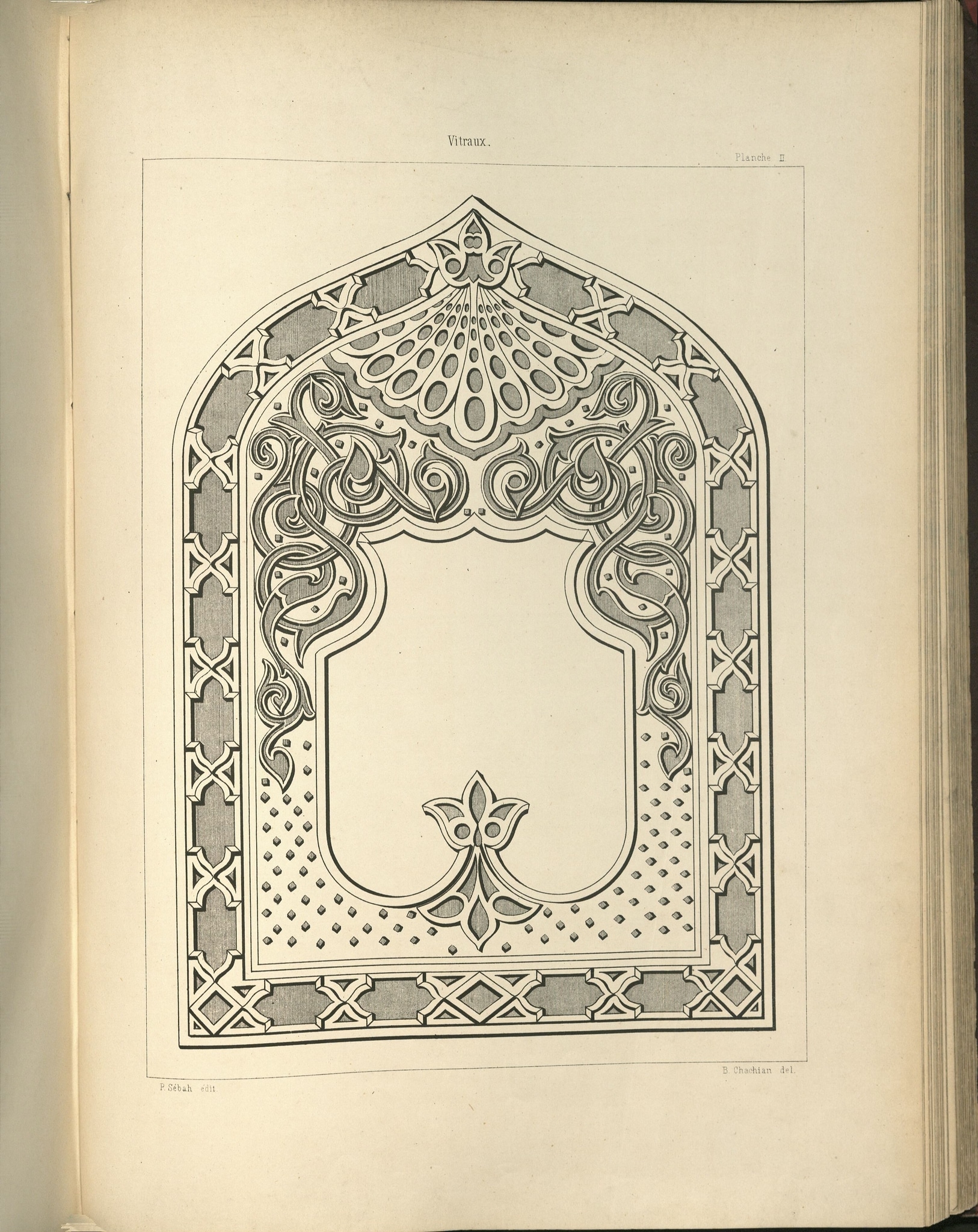Pl. II from the part on glass windows in the ‘Observations Concerning Ottoman Ornamentation’ (‘Bemerkungen zur Osmanischen Ornamentation. Glasscheiben’ / ‘Notices sur l’ornementation ottomane. Vitraux’) in Marie de Launay, Die Ottomanische Baukunst / L’Architecture ottomane / Uṣūl-i Miʿmāriyye-i ʿUsmaniyye, Istanbul: Imprimerie et lithographie centrales (1873). This is a monochrome print based on a drawing by Bogos Şaşiyan. It shows a stucco and glass window with an ogee arch. The explanation of the plates locates the window in Bursa.
The stucco is represented by drawn outlines, and three-dimensionality is indicated by thicker black lines. Yet this shading is not executed rightly, so it is not possible to distinguish between the different surface layers. The hatched parts depict glass panes. The window has an outer frame with repeating small cartouches, each containing one large glass piece. The inner part of the window is filled with a floral ornament with highly intertwined tendrils and individually positioned trilobed palmettes. In the lower part, the window has a stucco surface perforated with small holes that also contain pieces of glass, as the hatching indicates. In the centre, a large area of curvilinear outline was left blank, which may indicate that it contains a large piece of transparent glass. In contrast, the hatched parts, with their darker tone, probably depict coloured glass.
